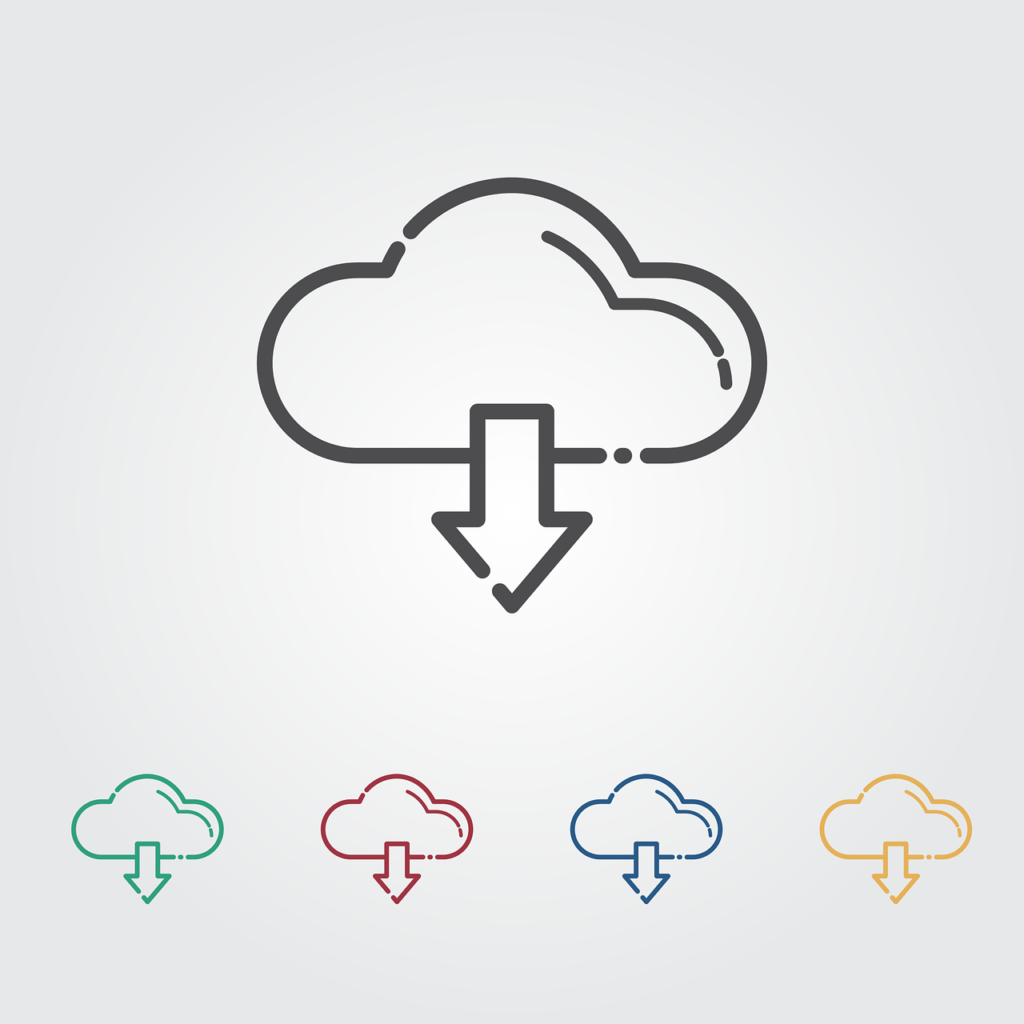If you’re using cloud storage on Windows and want to ensure the security of your data, there are several steps you can take. From choosing a reputable cloud storage provider to using strong and unique passwords, this article will guide you through the essential measures to keep your data safe and protected. Whether you’re a business owner or an individual user, taking these steps will give you peace of mind when storing your valuable information in the cloud.

Choosing a Secure Cloud Storage Provider
When considering cloud storage providers, it’s crucial to take the time to research and compare different options. Look for providers that offer strong encryption to ensure that your data is protected from unauthorized access. Encryption is a process that converts your data into a code, making it unreadable to anyone without the encryption key. This adds an extra layer of security and ensures that even if someone were to gain access to your stored files, they would not be able to decipher their contents.
Another important factor to consider when choosing a cloud storage provider is multi-factor authentication. This means that in addition to your password, you will need to provide a second form of authentication, such as a unique code sent to your phone, to access your account. This provides an extra level of protection against unauthorized access, as even if someone were to obtain your password, they would still need the second factor to gain entry.
Regular security updates are also essential in ensuring the safety of your data. When researching providers, check if they have a track record of releasing updates to their security systems. Regular updates help to patch any vulnerabilities or weaknesses that may be discovered, ensuring that your data remains secure.
User reviews and testimonials can provide valuable insights into the security and reliability of a cloud storage provider. By reading what other users have experienced, you can get a better understanding of the strengths and weaknesses of different providers. Pay attention to the experiences of users who have similar security concerns or data protection needs to your own.
Creating a Strong Password
One of the first steps in securing your cloud storage data is creating a strong password. A strong password is essential to protect your account from unauthorized access. When creating your password, use a combination of uppercase and lowercase letters, numbers, and special characters. This combination makes it much more difficult for hackers to guess or crack your password through brute force attacks.
Avoid using personal information in your password, such as your name, birthdate, or address. Hackers often try to exploit personal information to gain access to accounts. By using unrelated and random characters as your password, you reduce the risk of being a target.
It’s important to ensure that your password is at least 12 characters long. The longer the password, the more difficult it becomes for hackers to guess or crack it. Longer passwords create a higher level of security, making it harder for attackers to gain unauthorized access to your cloud storage account.
Regularly changing your password adds an extra layer of protection to your account. By changing your password every few months, you reduce the risk of it becoming compromised. Be sure to create a new strong password each time you change it to maintain a high level of security.

Enabling Two-Factor Authentication
Enabling two-factor authentication (2FA) is an effective way to enhance the security of your cloud storage account. 2FA adds an extra layer of protection by requiring a second form of authentication in addition to your password. This second factor is typically something you possess, such as a unique code sent to your phone, a fingerprint, or a hardware token.
When choosing a reliable and secure authentication method for your cloud storage account, consider options such as SMS codes, authenticator apps, or hardware tokens. Each method has its strengths and weaknesses, so it’s important to choose one that fits your needs and level of convenience.
It’s always a good idea to keep backup authentication methods in case you lose or cannot access your primary device. For example, if you rely on an authenticator app on your smartphone, make sure you have backup codes or access to another device with the app installed.
Avoid sharing your authentication codes or backup methods with others. 2FA is designed to provide an additional layer of security, but it can be compromised if others have access to your authentication methods. Keep your authentication codes and backup methods secure and confidential.
Encrypting Your Files before Uploading
Encrypting your files before uploading them to the cloud adds an extra layer of security, as even if someone were to gain access to your files, they would be encrypted and unreadable without the encryption key. Using encryption software, you can encrypt your files locally on your device before uploading them to the cloud.
Choose an encryption method that is strong and secure. Advanced Encryption Standard (AES) is widely regarded as one of the most secure encryption algorithms available. It is important to choose a high level of encryption to protect your data adequately.
When encrypting your files, ensure that you keep your encryption key or password in a safe place. Losing your encryption key may result in permanent loss of access to your encrypted files. Consider using a password manager to securely store and manage your encryption keys and passwords.
For an additional layer of security, consider using file-level encryption. File-level encryption encrypts individual files rather than the entire storage account. This way, even if someone gains access to your cloud storage, they would still need the encryption key to decrypt each file, providing an additional safeguard for your data.

Regularly Updating Your Operating System and Software
Regularly updating your operating system, cloud storage client software, and other relevant software is crucial in maintaining the security of your data. Windows updates often include important security patches that address known vulnerabilities in the operating system. Keeping your operating system up to date reduces the risk of exploitation by attackers.
Ensure that you regularly update your cloud storage client software. Cloud storage providers release updates to address security vulnerabilities and improve the overall security of their services. By keeping your client software up to date, you can take advantage of these improvements and reduce the likelihood of unauthorized access to your data.
Installing reliable anti-malware software is essential in protecting your devices from malicious software or malware. Anti-malware software helps detect and remove malicious programs that could compromise the security of your data. Make sure to keep your anti-malware software updated to ensure it can effectively detect and protect against the latest threats.
Enabling automatic updates for all relevant software can save you the time and effort of manually checking for updates. With automatic updates enabled, your system and software will receive the latest security patches and improvements as soon as they become available.
Being Cautious with Sharing and Access Controls
When it comes to sharing and access controls, it’s important to be cautious and mindful of who you grant access to. Carefully manage permissions and sharing settings to ensure that only trusted individuals or organizations have access to your cloud storage data. Avoid granting unnecessary access privileges to minimize the risk of unauthorized access.
Regularly review and revoke access permissions for users or organizations that no longer require access to your data. This helps ensure that only current and necessary parties have access to your cloud storage. Regularly auditing and adjusting access controls is an important part of maintaining the security and integrity of your data.
Use secure file sharing options when necessary. Some cloud storage providers offer features such as password-protected links or expiration dates for shared files. These additional security measures can help prevent unauthorized access and ensure that shared files are only accessible for a limited period.
Backing Up Your Cloud Storage Data
Creating regular backups of your cloud storage data is essential to protect against data loss. While cloud storage providers have measures in place to ensure data redundancy and availability, it’s always a good idea to have an additional backup stored elsewhere.
Use multiple backup locations or services to minimize the risk of data loss. Storing backups in different physical locations or using different cloud storage providers decreases the likelihood of losing data in the event of a security breach or technical failure.
Ensure that your backups are encrypted and stored securely. Encryption ensures that even if someone were to gain access to your backup files, they would be unreadable without the encryption key. Store your backups in a secure location, whether it’s on an external hard drive, another cloud storage service, or dedicated backup software.
Testing your backups regularly is crucial to ensure their integrity and restorability. Periodically restore your backups to ensure that the data is intact and can be successfully retrieved when needed. Performing regular tests can help identify any issues with the backup process and address them before a real data loss scenario occurs.
Tracking and Monitoring Your Cloud Storage Activity
Monitoring your cloud storage account activity is an important step in detecting and preventing unauthorized access. Regularly review your account activity for any suspicious behavior, such as unexpected logins or access to files at unusual times. If you notice any suspicious activity, report it to your cloud storage provider immediately.
Setting up alerts or notifications for unusual account activity can provide an extra layer of protection. Many cloud storage providers offer features that allow you to receive email notifications or push notifications to your mobile device when certain activities occur. By promptly receiving these alerts, you can take immediate action to secure your account if necessary.
Regularly reviewing activity logs or audit trails is essential in maintaining the security of your data. These logs provide a detailed record of account activity, including logins, file modifications, and access attempts. By periodically reviewing these logs, you can identify any abnormalities or patterns that may indicate a security threat.
Report any suspicious activity to your cloud storage provider. They have dedicated security teams that can investigate and take appropriate action to secure your account and data. By reporting incidents promptly, you contribute to the overall security of the cloud storage community and help protect other users from potential threats.
Securing Your Devices and Network
Securing your devices and network is a fundamental part of protecting your data in cloud storage. Use strong passwords or biometric authentication, such as fingerprint or facial recognition, to ensure that only authorized individuals can access your devices. Strong device authentication significantly reduces the risk of unauthorized access to your cloud storage data.
Keep your operating system and software up to date to benefit from the latest security patches and improvements. Regularly check for and install Windows updates to ensure that your device remains secure. Outdated software can contain vulnerabilities that attackers can exploit to gain unauthorized access to your data.
Enable firewalls and secure Wi-Fi networks to protect your devices from unauthorized access. Firewalls help monitor and control network traffic, blocking potentially malicious connections. Secure Wi-Fi networks ensure that only authorized devices can connect to your network, reducing the risk of unauthorized access to your data.
Avoid using public Wi-Fi networks when accessing cloud storage. Public Wi-Fi networks are often unsecured and can be easily exploited by attackers. Instead, use a secure and private network, such as your home or workplace network, to access your cloud storage accounts and transfer files.
Educating Yourself and Your Team on Data Security Best Practices
Staying informed about the latest data security trends and threats is essential in maintaining the security of your cloud storage data. Regularly educate yourself and your team on secure cloud storage practices. Subscribe to security newsletters, follow industry experts, and attend webinars or conferences to stay up to date with the latest developments in data security.
Training yourself and your team on secure cloud storage practices ensures that everyone is aware of the potential risks and understands how to mitigate them. Provide training sessions or workshops that cover topics such as password hygiene, file encryption, and safe browsing habits. By equipping your team with the knowledge and skills to handle data securely, you strengthen the overall security of your cloud storage environment.
Provide guidelines and policies for data handling and storage. Establish clear guidelines for creating and managing passwords, encrypting files, and sharing access to data. Implement policies that outline the acceptable use of cloud storage and provide guidelines on how to handle sensitive or confidential information. Regularly review and reinforce these guidelines to ensure that they align with the latest security practices.
Regularly review and reinforce security awareness among yourself and your team. Remind everyone of the importance of data security and encourage them to remain vigilant. Emphasize the need to follow best practices and report any potential security breaches or incidents. By continuously reinforcing security awareness, you create a culture of security consciousness that minimizes the risk of data breaches or compromises.
By taking these steps to secure your data in cloud storage on Windows, you can have peace of mind knowing that your data is protected and your privacy is maintained. It’s important to remember that data security is an ongoing process that requires constant attention and adaptation. Stay informed, practice good security habits, and regularly review and update your security measures to stay one step ahead of potential threats.
